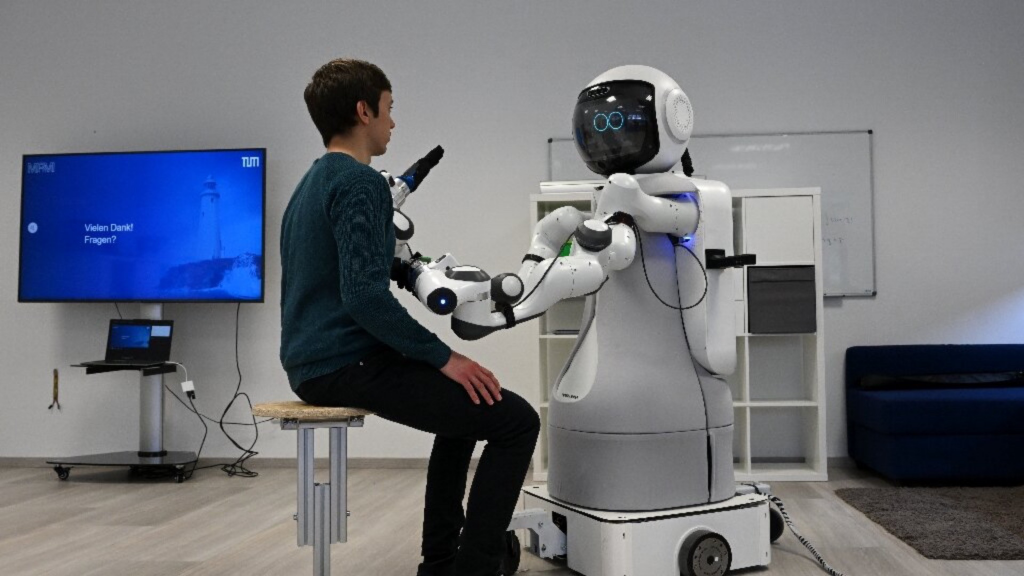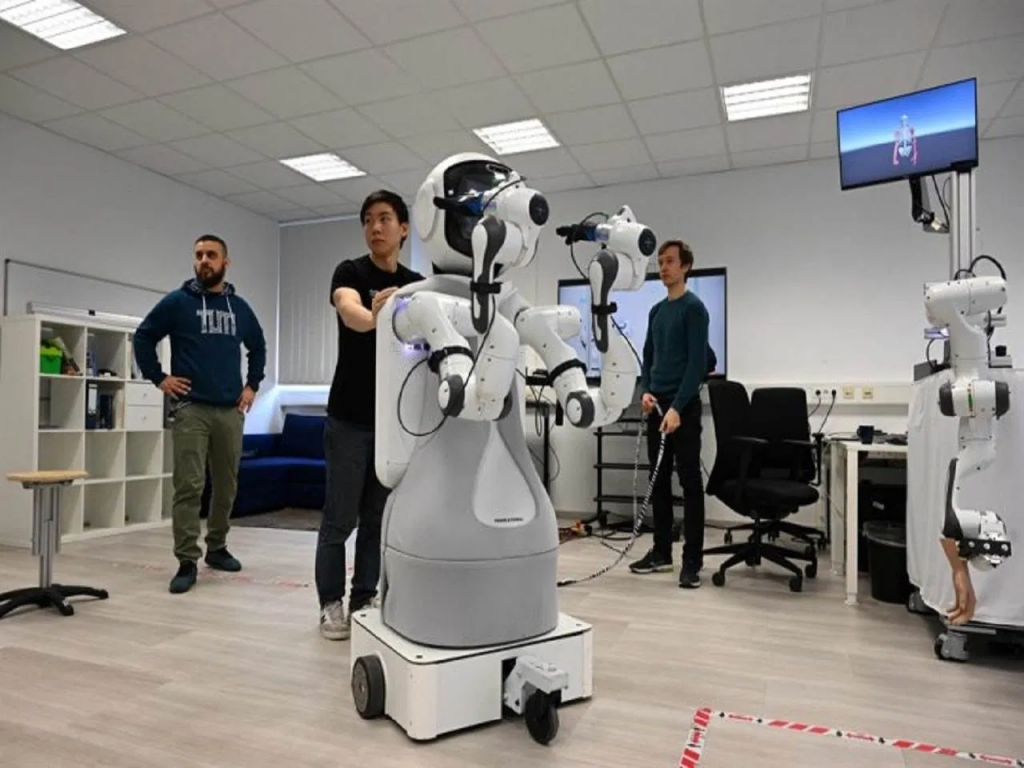In today’s world, robots are gradually becoming a common sight in various industries, playing a crucial role in shaping our daily lives. Healthcare is one area where robots have shown great potential. In this context, GARMI, a humanoid robot developed by scientists and medical professionals in Germany, has the potential to transform patient care and assistance for the elderly.
With its advanced diagnostic capabilities and ability to perform household tasks, GARMI is an exciting development in the field of robotics, offering new possibilities for patient care and support.

GARMI is mounted on a wheeled platform with a white body and a black screen displaying two blue circles as eyes.
The robot is intended to perform patient diagnostics and is equipped with measuring devices such as an ECG, a sphygmomanometer, and an ultrasound, to name a few. Doctors can evaluate the robot’s diagnostics in any location, making it possible for people living in remote areas to receive medical attention.

The team aims to train GARMI to perform some of the duties of nurses and caregivers, which is essential as approximately 670,000 caregiver positions in Germany are likely to go unfilled by 2050.
Additionally, GARMI can assist the elderly in their daily activities, such as serving meals, opening a bottle of water, calling for help in emergencies, and organizing a video call with family and friends.
The development of humanoid robots like GARMI has the potential to revolutionize healthcare, especially in geriatrics and nursing. Moreover, with the increasing demand for patient care and a shortage of healthcare workers, robots can provide much-needed assistance in remote areas and the homes of the elderly.

The development of geriatrics is a step forward in integrating advanced technologies in the care of the elderly and could improve their quality of life. In addition, the future of robotics in healthcare is promising, and it will be interesting to see how these machines continue to evolve and shape the way we approach healthcare in the coming years.


